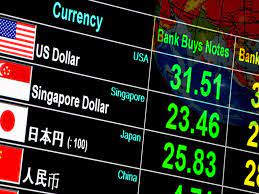The foreign exchange market, often referred to as Forex or FX, is the largest financial market in the world, with a daily turnover exceeding $6 trillion. Central to this global marketplace is the foreign exchange rate, a concept that influences economies, businesses, travelers, and investors worldwide. In this comprehensive guide, we will demystify foreign exchange rates, explore the factors affecting them, and delve into their far-reaching impact.
Chapter 1: What Are Foreign Exchange Rates?
Foreign exchange rates, often abbreviated as Forex or FX rates, are the rates at which one currency can be exchanged for another. These rates are determined in the foreign exchange market, and they fluctuate continuously due to supply and demand dynamics.
1.1 Currency Pairs:
Foreign exchange rates are quoted in pairs, such as EUR/USD or GBP/JPY. The first currency is the base currency, and the second is the quote currency. The rate represents how much of the quote currency you need to purchase one unit of the base currency.
1.2 Spot vs. Forward Rates:
Spot rates refer to the current exchange rate for immediate delivery of currencies, while forward rates represent a future exchange rate for a specified date.
Chapter 2: Factors Affecting Exchange Rates
2.1 Interest Rates:
Differences in interest rates between two countries can significantly impact exchange rates. Higher interest rates in a country can attract foreign capital, increasing demand for its currency.
2.2 Inflation Rates:
Countries with lower inflation rates often see appreciation in their currency value. Low inflation implies increased purchasing power and stronger currency.
2.3 Economic Indicators:
Economic indicators like GDP growth, employment data, and trade balances influence exchange rates. Strong economic performance tends to boost a nation’s currency.
2.4 Political Stability:
Countries with stable governments and low levels of political risk generally have more attractive currencies for investors.
2.5 Speculation:
Forex traders, hedge funds, and institutional investors engage in speculation, which can lead to short-term exchange rate fluctuations.
Chapter 3: Exchange Rate Mechanisms
3.1 Floating Exchange Rates:
In a floating exchange rate system, exchange rates are determined by market forces without government intervention. Most major currencies, like the US Dollar (USD) and Euro (EUR), use this system.
3.2 Fixed Exchange Rates:
Some countries peg their currencies to another currency or a basket of currencies, maintaining a fixed exchange rate. This system requires central bank intervention to maintain the peg.
3.3 Managed Exchange Rates:
In this system, governments intervene occasionally to influence their currency’s value without committing to a fixed or floating regime.
Chapter 4: Exchange Rate Impact
4.1 International Trade:
Exchange rates play a crucial role in international trade. A strong domestic currency can make exports more expensive, while a weaker currency can boost exports.
4.2 Investment and Capital Flows:
Investors consider exchange rates when investing in foreign assets. A favorable exchange rate can increase the returns on overseas investments.
4.3 Travel and Tourism:
Exchange rates have a direct impact on travel expenses. A stronger home currency allows travelers to get more value abroad, while a weaker currency can lead to increased travel costs.
4.4 Exchange Rate Risk:
Businesses engaged in international trade must manage exchange rate risk to protect profit margins and reduce financial volatility.
Chapter 5: Exchange Rate Forecasting
5.1 Fundamental Analysis:
This approach involves analyzing economic and financial data to predict future exchange rate movements.
5.2 Technical Analysis:
Technical analysts use historical price and volume data to identify trends and predict future movements.
5.3 Sentiment Analysis:
Sentiment analysis gauges market sentiment, often through social media and news sentiment, to anticipate market moves.
Chapter 6: Exchange Rate and You
6.1 Currency Exchange for Travelers:
Travelers should keep an eye on exchange rates to get the best value for their money when converting currency.
6.2 Investments and Diversification:
Investors can use currency diversification to manage risk and potentially enhance returns in their investment portfolios.
6.3 Business and Risk Management:
Businesses engaged in international trade need effective risk management strategies to cope with exchange rate fluctuations.
Conclusion: The Endless Dynamics of Exchange Rates
Foreign exchange rates are the heartbeat of the global economy, shaping trade, investment, and international relations. Understanding these rates is not only vital for businesses and investors but also for travelers navigating the complex world of international currencies.
As the world continues to become more interconnected, exchange rates will remain a dynamic and fascinating field of study, impacting every facet of our lives and the world’s economies. By grasping the concepts explored in this guide, you’re better equipped to navigate this complex financial landscape and harness its potential to your advantage.

